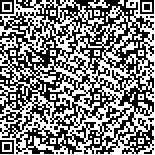| 本文已被:浏览 99次 下载 22次 |

码上扫一扫! |
|
|
| 基于网络药理学和实验验证探讨参兰颗粒治疗主动脉弓缩窄的心力衰竭机制研究 |
|
刘燕1,2, 陈晓阳3,4, 张理3,5, 徐学功3,5,6
|
|
1.河南中医药大学第一附属医院心血管科, 郑州 450046;2.郑州市中医院, 郑州 450046;3.广州中医药大学-郑州市中医院方证研究联合实验室, 郑州 450046;4.广州中医药大学基础医学院, 广州 510405;5.河南省中医药心血管病重点实验室, 郑州 450046;6.河南省慢性病中医药转化工程技术研究中心, 郑州 450046
|
|
| 摘要: |
| [目的] 通过网络药理学及动物实验探究参兰颗粒(SLG)防治心力衰竭(HF)的作用机制。[方法] 借助TCMSP、GeneCards、BATMAN等数据库筛选SLG防治HF的活性成分及相关靶点制作韦恩图,利用STRING数据库及Cytoscape软件构建蛋白-蛋白互作网络(PPI)及“药物-成分-作用靶点”网络,通过R-studio对作用靶点进行GO和KEGG富集分析。采用主动脉弓缩窄法构建C57BL/6小鼠HF模型,分为假手术组、模型组、SLG低剂量组、高剂量组、卡托普利组,连续给药4周后,超声心动图检测各组小鼠的射血分数(EF)、短袖缩窄分数(FS)、左室舒张末期内径(LVIDd)、左室收缩末期内径(LVIDs);酶联免疫吸附法(ELISA)检测血清中前体脑钠肽(NT-proBNP)、白细胞介素(IL)-6、IL-1β、肿瘤坏死因子α(TNF-α)的含量;苏木精-伊红(HE)染色观察心肌病理损伤;马松染色(Masson)观察心肌纤维化程度;WGA染色观察心肌细胞的肥大情况;qPCR检测丝氨酸/苏氨酸蛋白激酶(AKT)、核因子-κB(NF-κB)、IL-1β的mRNA表达水平;蛋白免疫印迹法(Western blot)检测胞内磷脂酰肌醇激酶(PI3K)、p-PI3K、p-AKT、AKT、p-NF-κB、NF-κB的蛋白表达。[结果] 从SLG中筛选出84个有效成分,其治疗HF的核心靶点有IL-6、AKT1、STAT3、IL-1β等,GO分析共得到2 841个条目,发现其潜在靶点可以作用于脂多糖反应、活性氧代谢、血管直径的调节等生物过程,KEGG结果显示SLG治疗HF相关通路有PI3K/AKT信号通路、肿瘤坏死信号通路、NF-κB信号通路等。动物实验结果显示,与模型组相比,SLG各剂量组显著降低模型小鼠的EF、FS(P<0.01),减小LVIDd、LVIDs(P<0.05或P<0.01),提高血清中NT-proBNP、IL-6、IL-1β、TNF-α的含量(P<0.05或P<0.01),减少心肌胶原纤维容积百分比(P<0.01)及减小心肌细胞平均横截面面积(P<0.05或P<0.01),降低IL-1β、AKT、NF-κB的mRNA的表达水平(P<0.05或P<0.01),降低p-PI3K/PI3K、p-AKT/AKT、p-NFκB/NF-κB蛋白的比值(P<0.01)。[结论] SLG可能通过介导PI3K/AKT/NF-κB信号通路调控心脏炎症水平进而发挥对压力负荷HF小鼠的心脏保护作用。 |
| 关键词: 参兰颗粒 主动脉弓缩窄 心力衰竭 网络药理学 |
| DOI:10.11656/j.issn.1672-1519.2025.02.14 |
| 分类号:R285.5 |
| 基金项目:河南省科技攻关项目(242102310528)。 |
|
| Exploration of effect and mechanism of Shenlan Granule on transverse aortic constriction-induced heart failure in mice based on network pharmacology and experimental verification |
|
LIU Yan1,2, CHEN Xiaoyan3,4, ZHANG Li3,5, XU Xuegong3,5,6
|
|
1.Cardiovascular Department, The First Affiliated Hospital of Henan University of Traditional Chinese Medicine, Zhengzhou 450046, China;2.Zhengzhou Hospital of Chinese Medicine, Zhengzhou 450046, China;3.Joint Formula and Syndrome Research Laboratory, Guangzhou University of Chinese Medicine & Zhengzhou Hospital of Chinese Medicine, Zhengzhou 450046, China;4.School of Basic Medical Sciences, Guangzhou University of Chinese Medicine, Guangzhou 510405, China;5.Henan Provincial Key Cardiovascular Disease Laboratory of Chinese Medicine, Zhengzhou 450046, China;6.Henan Provincial Transformation Engineering Research Center of Chinese Medicine for Chronic Diseases, Zhengzhou 450046, China
|
| Abstract: |
| [Objective] The study aims to investigate the potential mechanism of Shenlan Granule(SLG) on heart failure(HF) via network pharmacology and animal experiments. [Methods] TCMSP,GeneCards,and BATMAN databases were used to screen the active ingredients and related targets of SLG for HF prevention. The protein-protein interaction network(PPI) and “drug-component-target” network were constructed using the STRING database and Cytoscape software. GO and KEGG enrichment analyses of the targets were performed by R-studio. The HF model was established by C57 mice using the transverse aortic constriction method. These mice were divided into sham surgery group,model group,low-dose SLG group,high-dose SLG group,and captopril group. After 4 weeks of continuous drug administration,echocardiography was used to detect ejection fraction(EF),fractional shortening rate(FS),left ventricular end-systolic internal diameter(LVIDs),and left ventricular end-diastolic internal diameter(LVIDs). ELISA was used to detect the levels of pro-brain natriuretic peptide(NT-proBNP)and interleukin(IL)-6,IL-1β,and tumor necrosis factor α(TNF-α) in serum. HE staining was used to observe myocardial injury. Masson staining was used to observe the degree of myocardial fibrosis. WGA staining was used to observe the size of cardiomyocytes. The qPCR was used to detect the mRNA expression levels of serine/threonine protein kinase(AKT),nuclear factor κB(NF-κB),and IL-1β. Western blot was used to detect the protein expression of phosphatidylinositol 3-kinase(PI3K),p-PI3K,p-AKT,AKT,p-NF-κB,and NF-κB. [Results] AA total of 84 active ingredients were screened out from SLG. The key targets for the treatment of HF include IL-6,AKT1,STAT3,IL-1β,etc. GO analysis which obtained 2 841 items suggested that the potential targets that acted on biological processes were lipopolysaccharide reaction,active oxygen metabolism,and the regulation of blood vessel diameter,etc. KEGG analysis suggested that the related pathways were the PI3K/AKT signaling pathway,tumor necrosis signaling pathway,NF-κB signaling pathway,etc. Experimental results show that compared with the model group,SLG dose groups significantly decreased EF and FS(P<0.01),decreased LVIDd and LVIDs(P<0.05 or P<0.01),decreased the contents of NT-proBNP,IL-6,IL-1β and TNF-α in serum(P<0.05 or P<0.01),decreased the volume of myocardial collagen fibers(P<0.01),decreased the mean cross-sectional area of cells(P<0.05 or P<0.01),and decreased the mRNA expression levels of IL-1β,AKT and NF-κB(P<0.05 or P<0.01). The ratio of p-PI3K/PI3K,p-AKT/AKT,and p-NF-κB/NF-κB protein was also decreased(P<0.01). [Conclusion] SLG may exert cardioprotective effects on HF mice under pressure load by regulating the level of cardiac inflammation via the PI3K/AKT/NF-κB signaling pathway. |
| Key words: Shenlan Granule transverse aortic constriction heart failure network pharmacology |
